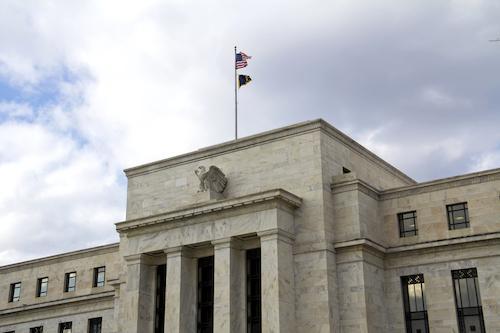
Fed Chair and Precious Metals
Despite continuing inflation fears, gold and silver prices closed the week lower, unable, for now, to maintain the respective plus-$1,860 and $25 levels that were achieved only a week ago. We had expected their prices to consolidate at these levels before moving on to higher points still before the year’s end, but so far, this has not come about. We suspect that, in the week ahead, market reconsideration could bring them back to match last week’s figures, but there is little doubt that the past day or so can be seen as setbacks in the metals’ continued upwards paths, although for how long remains to be seen.
We still think U.S. economic progress out of the coronavirus-related restrictions, coupled with current, perhaps out-of-control inflation, remain gold positive and do not yet conflict with our plus-$1,900 expectation for the yellow metal in the current year and the regaining of $2,000 in the first half of 2022. However, all this could easily change on the release of further positive or negative announcements.
The trigger for Friday’s sharp gold and silver price downturns appears to have been a speech by a known “hawk” on the Fed board, Christopher Waller. The speech to the Center for Financial Stability was rather more hawkish in tone than has been put forward by any other Fed board member recently. He acknowledged that the current inflation level seems to be rather less transitory than recent Fed statements had suggested and would continue on its current path for longer than had previously been anticipated by the Fed board. This might be considered bullish for gold, but the possibility of sped up anti-inflationary moves had the opposite effect.
As we noted above, Waller is one of the more hawkish Fed board members. Therefore, how much his views coincide with those of other board members is somewhat uncertain. Waller advocated a need to speed up the tapering process beyond the rate indicated in currently announced plans to, in turn, position the Fed to start raising interest rates sooner than had been suggested in its recent statements.
As Gary Wagner puts it in a recent comment on Kitco, “Waller is a voting member of the Federal Reserve, [but] he is only one member.” The more dovish Fed members will presumably continue to support the central bank’s current monetary policy regarding the proposed tapering program remaining intact, thereby waiting until the end of June 2022, at least, before making any adjustments to the federal funds rate.
Wagner also points to uncertainty surrounding whether Fed Chair, Jerome Powell, will remain in his position when his current official term ends early next year (although, as of Monday morning, U.S. time, President Biden has announced that he will renominate Powell as Fed Chair. The nomination is now subject to Senate confirmation).
Additionally, President Biden might need to fill as many as three new Federal Reserve Board of Governors seats imminently (the central bank’s Board of Governors has seven members). If Powell stands down, the number could rise to four, as he is thought unlikely to stay on the Board, should his term as Chair ends.
In the above scenario, the appointments would be expected to toe the Biden line, which would presumably put them in the “dovish” camp, as well. However, the Biden policy on whether to raise interest rates sooner rather than later is a little uncertain. It is assumed that, at this stage, he would be loath to bring the proposed Fed program forward, for fear of derailing any signs of economic recovery and possibly delaying further improvements in the unemployment numbers.
Any decision to speed up the likely raising of interest rates has been based upon maximum employment and in an inflation rate of around 2% over the long term. Powell has been suggesting that maximum employment would be the Fed’s primary priority, rather than the focus being on raising interest rates to try and help control inflation. This has led to the Fed’s current main policy predicament. We have been of the opinion that a Powell Fed might be prepared to put up with higher inflation rates for longer, as higher inflation can also be a help in repaying some of the massive debt that has built up in devalued dollars. But so far, the dollar parity has not been playing ball, as its principal currency “competitors” are all facing similar problems with inflation, allowing the dollar index to remain elevated.
Perhaps the Fed will have to act one way or the other even before its final FOMC meeting of the year, which is due to take place in mid-December. It is probably waiting on the next PCE inflationary index – its preferred inflation data measure – which is due to be released on November 24, before making a final decision. Until then, precious metals prices will likely remain in limbo, although they could move up or down with the release of any new statements from Fed Board members in the meantime, or other relevant data releases.






